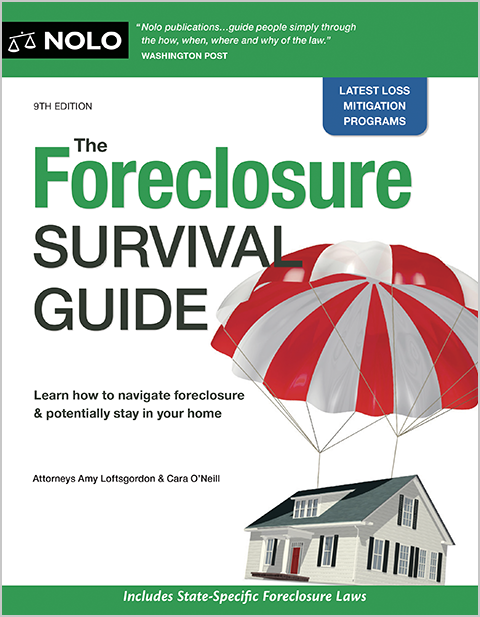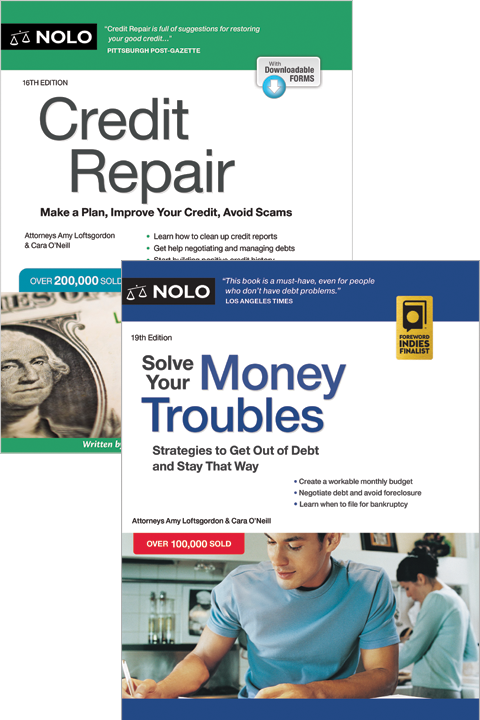Can the SBA foreclose on a house because of a defaulted disaster loan? In some cases, yes.
Even if you don't have a small business, if you've been affected by a natural disaster like a hurricane, tornado, wildfire, or mudslide, you might be eligible to get a disaster loan from the U.S. Small Business Administration (SBA).
SBA disaster assistance is disbursed in the form of loans, not grants. So, borrowers must agree to pay the money back. For some SBA disaster loans, borrowers have to provide collateral for the loan. (13 C.F.R. § 123.11).
If you put up real estate, such as your home, to secure the loan and later default, like by failing to make the payments, the lender might foreclose.
What Is an SBA Disaster Loan?
The SBA provides low-interest, fixed-rate loans to homeowners, renters, nonprofit organizations, and business owners to help rebuild a home, replace belongings, or repair a business, among other things, after a natural disaster.
You can use disaster loan proceeds for restoring or replacing your primary home, including a mobile home used as a primary residence, your personal property, or business property. (13 C.F.R. § 123.7).
The loan money can also be put toward bringing the property as close as possible to its pre-disaster condition, and within certain limits, to protect damaged or destroyed real property from potential future similar disasters. (13 C.F.R. § 123.7).
The SBA might issue the disaster loan itself, or the loan might come from a participating lender. If you get your loan directly from the SBA, then the SBA will service (manage) the loan. But if you take out the loan from a participating lender, that lender is responsible for servicing your loan. (13 C.F.R. § 123.16).
How to Apply for an SBA Disaster Loan
Go to the U.S. Small Business Administration website to apply for an SBA disaster loan. This site provides disaster loan application instructions and details about SBA disaster loan requirements.
Submitting an online application is the quickest way to get a decision about loan eligibility, but you may also apply via mail or in person at any Disaster Recovery Center. For more information or to find a Disaster Recovery Center near you, contact the SBA Customer Service Center at 800-659-2955 or send an e-mail to [email protected].
What Happens If You Default on an SBA Disaster Loan?
While each situation is a little different, here's generally what happens if you don't make the payments for your SBA disaster loan.
The SBA Will Demand Repayment
Once you fall behind in your SBA disaster loan payments, you'll be subject to late fees and perhaps some other charges. You'll likely receive phone calls and letters advising you to get caught up on the loan.
SBA servicing guidelines say that an alternative to foreclosure should be negotiated whenever possible, and many different options are available. So, contact your lender or the SBA, depending on who services the loan, as soon as you think you might miss a payment.
You could be able to work out a loss mitigation option (see below). And the sooner you ask for help, the more alternatives will be available to you.
Loss Mitigation Options
Because the lender wants you to repay what you owe, rather than foreclose, you most likely have different ways to get caught up on what you owe.
A payment forbearance or loan restructuring might be possible. If you're unable to make your SBA loan installments in a timely manner for reasons that are substantially beyond your control, you may ask that the SBA suspend your loan payments or extend the loan maturity date, or both, to give you some relief. (13 C.F.R. § 123.16).
You might be eligible for another option. Also, under SBA servicing guidelines, if you're facing a severe hardship, you might be able to get (for example) a deferment of past or future payments of principal, interest, or both for a stated amount of time. Or you might be able to get a reduction in the interest rate, payment amount, or frequency of payments.
Also, consider an "offer in compromise." Another potential option is an "offer in compromise" where the borrower offers to pay less than what's owed to satisfy the debt fully.
You Might Lose Your Collateral
As part of getting the loan, you might have put up your home or other real property as collateral. After a loan default, the lender has the right to foreclose and sell the property at a foreclosure sale to get some or all of their money back.
So, if you default on the payments for a disaster loan that's secured by your home or other real estate and don't work out a way to clear up the delinquent debt, the lender could potentially foreclose.
A foreclosure will be either judicial or nonjudicial, depending on state law and whether or not the mortgage contract has a provision granting a power of sale.
Your Credit Scores Might Be Impacted
Going through a foreclosure will impact your credit scores. FICO credit scores, the most common type of credit scores, have a 300 to 850 range. Your scores will probably go down by at least 100 points or so after a foreclosure.
But exactly how much a foreclosure impacts a person's credit scores varies from one borrower to the next. Generally, how much your scores will fall will depend to a large degree on your scores before the foreclosure. (And keep in mind that missing your payments will also drop your scores.)
The drop is more severe if you had very high credit scores before a foreclosure. If you already have low credit scores, a foreclosure will have less of an effect.
The SBA May Take Legal Action
If the SBA chooses not to foreclose, it could potentially sue you for a money judgment.
Struggling to Repay Your SBA Loan? Get Help Now!
If you're facing a possible foreclosure due to nonpayment on an SBA disaster loan, contact the SBA or your lender, depending on who services the loan, to discuss loss mitigation options.
If you're facing a potential foreclosure and have questions about the process, want to fight the foreclosure, or need to learn how to avoid foreclosure, consider talking to a foreclosure attorney.
For more information about SBA disaster loans, go to SBA.gov, and search for "Disaster Assistance." To learn more about other available disaster programs, go to DisasterAssistance.gov.

